
Thursday, November 30th, 2017
The Harlem Hellfighters’ Great War
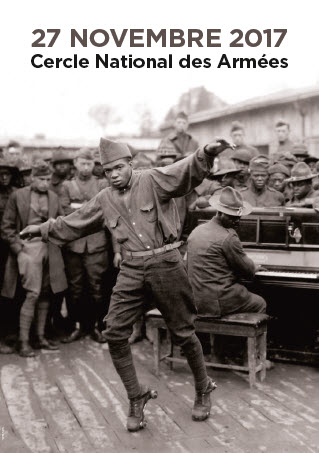 Flier for Harlem Hellfighters documentary screening
Flier for Harlem Hellfighters documentary screening
On the evening of Monday 27 November, a documentary about the Harlem Hellfighters entitled La Grande Guerre des Harlem Hellfighters (The Harlem Hellfighters’ Great War) was screened at the Cercle National des Armées (National Circle of Armies) in Paris.
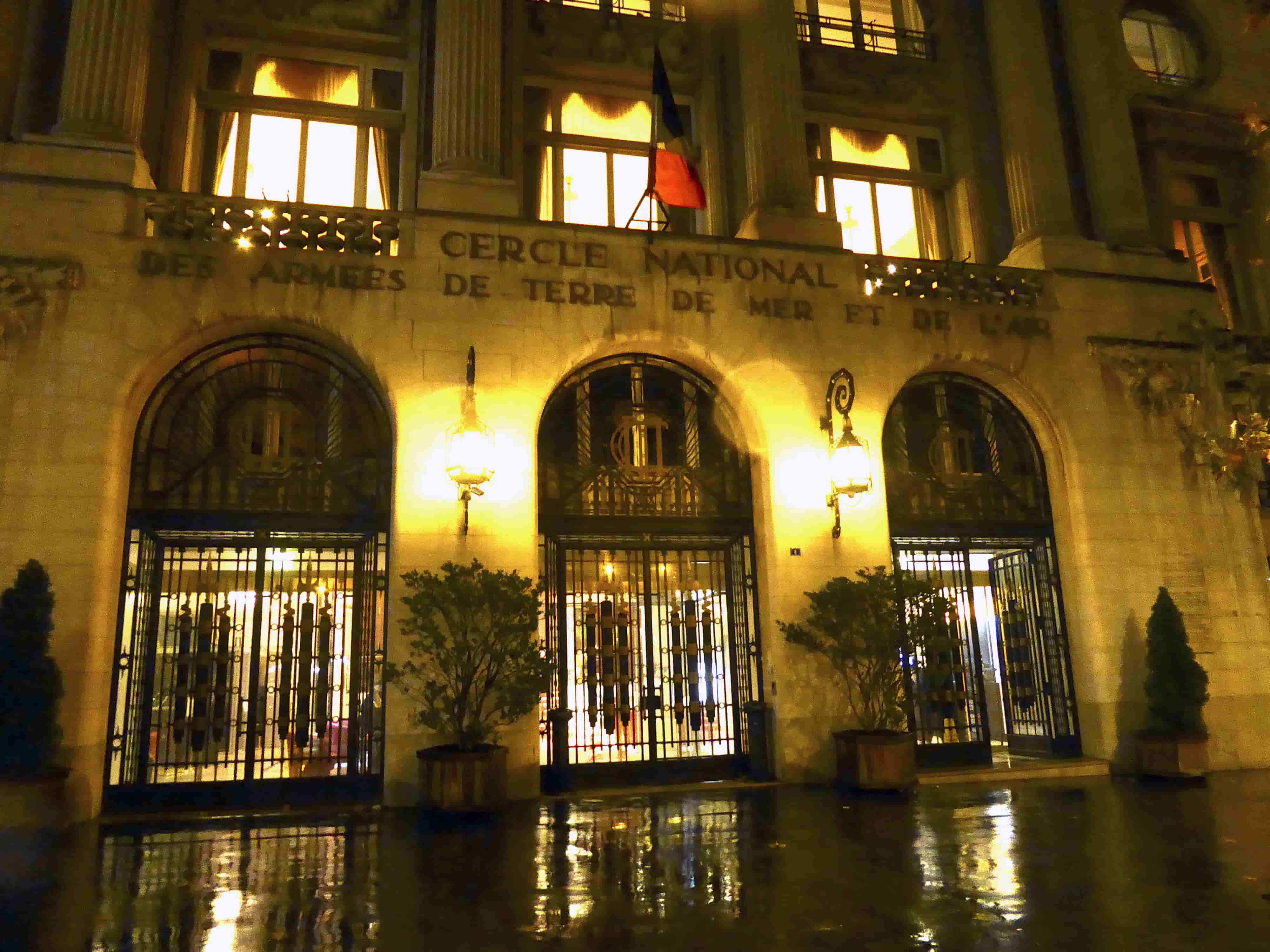 Cercle National des Armées
Cercle National des Armées
© Entrée to Black Paris
Over 200 persons attended the event, which was an avant-première of the scheduled television debut of the film.
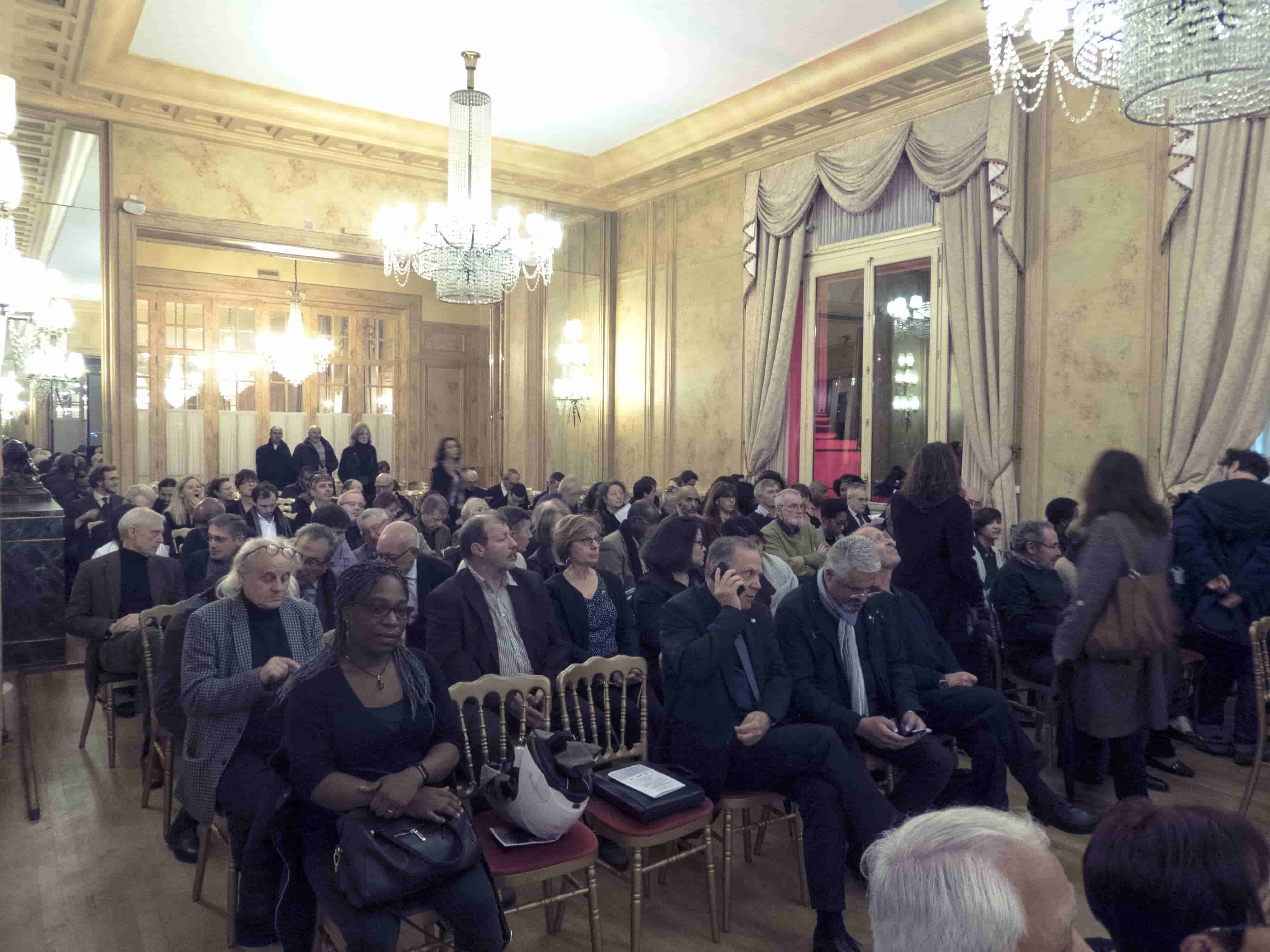 Audience awaiting the beginning of the screening
Audience awaiting the beginning of the screening
© Entrée to Black Paris
The screening was preceded by several brief speeches, including one by Colonel Jack Aalborg, Air Attaché for the U.S. Embassy in France and one by Dr. Geneviève Darrieussecq, Secretary of State for the Minister of Armies.
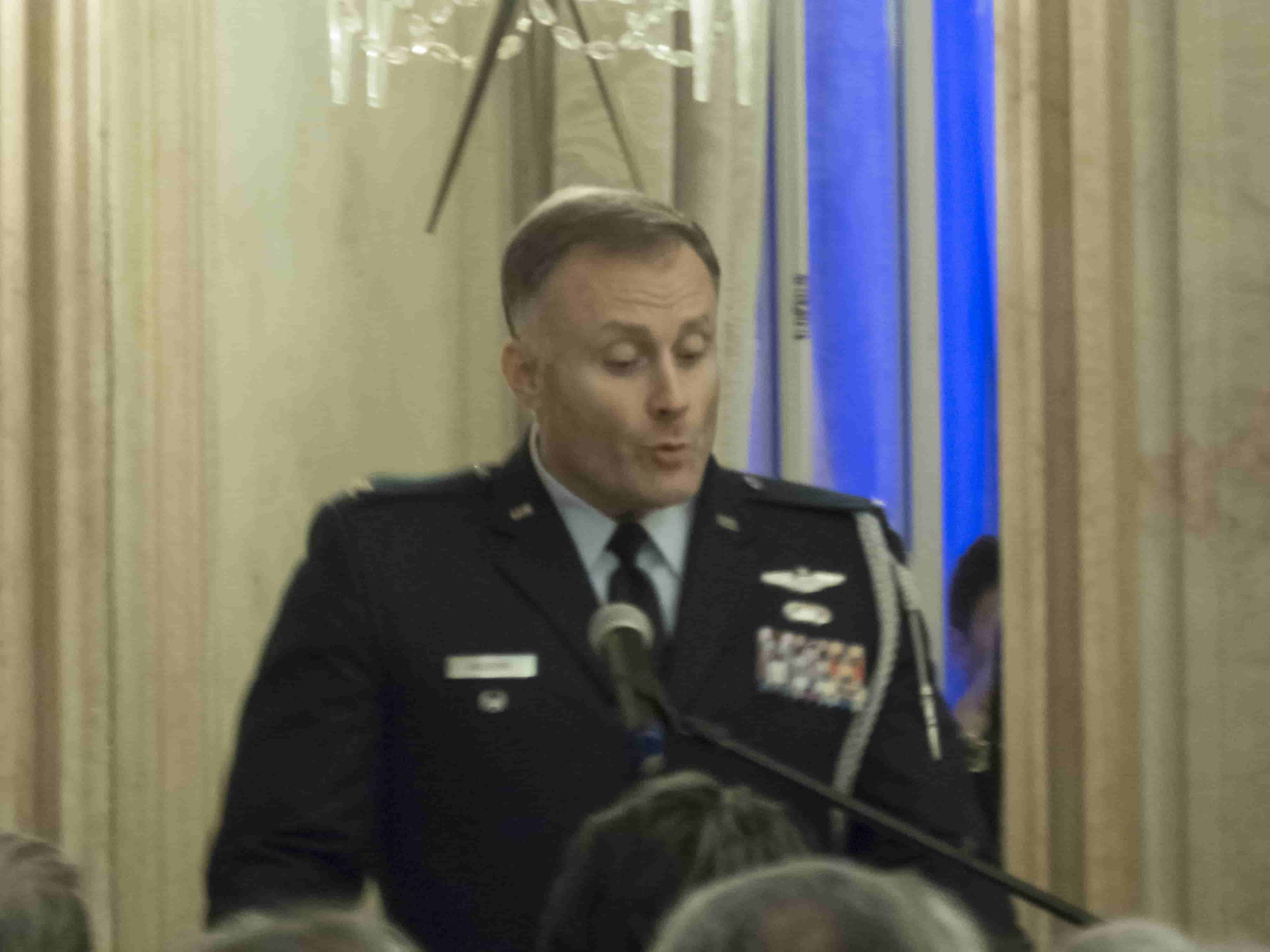 Colonel Jack Aalborg
Colonel Jack Aalborg
© Entrée to Black Paris
François Reinhardt, director of the documentary, was present for the screening and joined the panel for discussion of the film afterward.
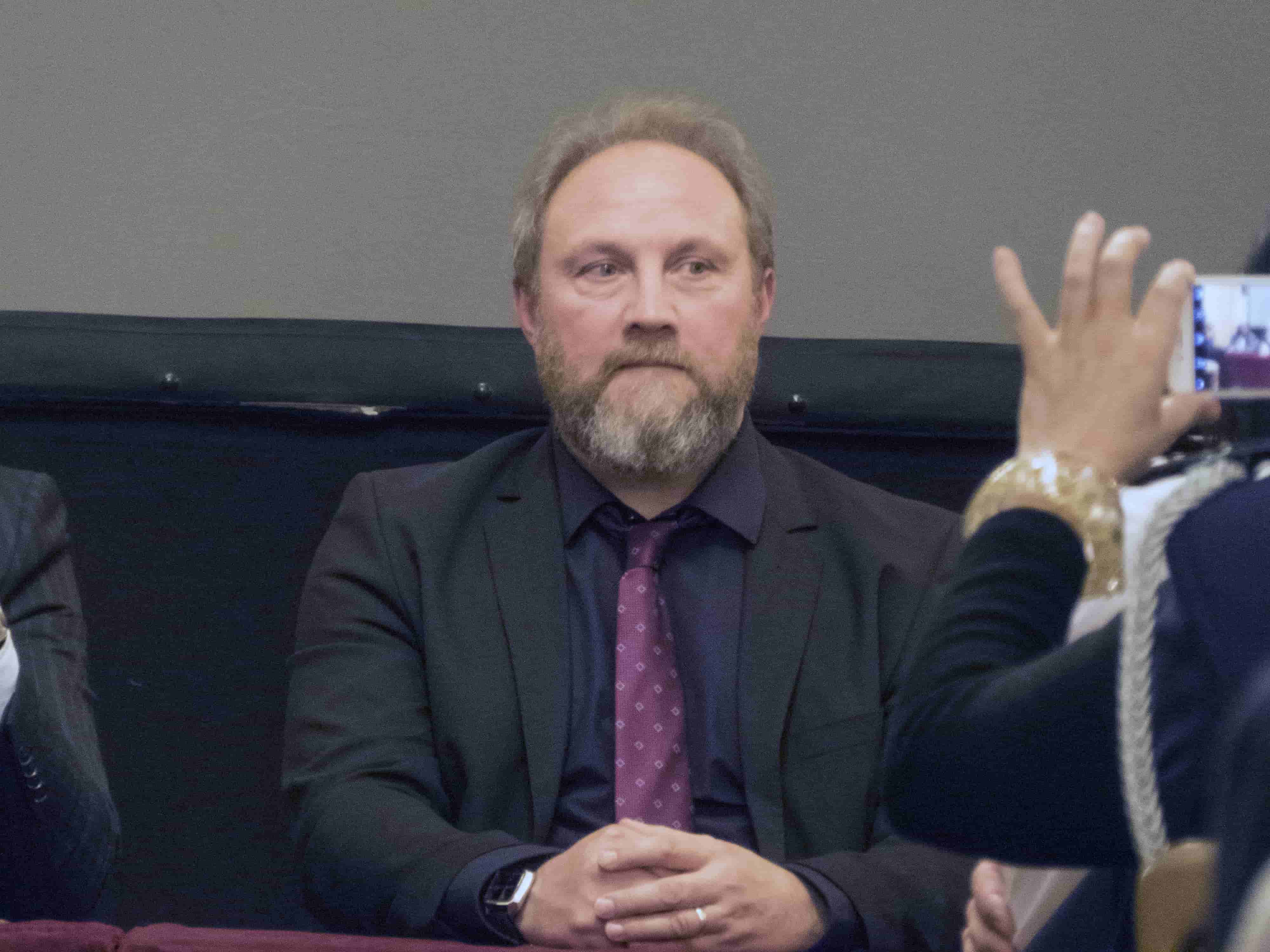 François Reinhardt
François Reinhardt
© Entrée to Black Paris
Early in the film, we see footage of President Barack Obama awarding the Medal of Honor to Private Henry Johnson in a posthumous ceremony for his courageous service in the Argonne Forest during World War I. The French honored Johnson with their highest medal for bravery – the Croix de Guerre (with bronze palm and bronze star).
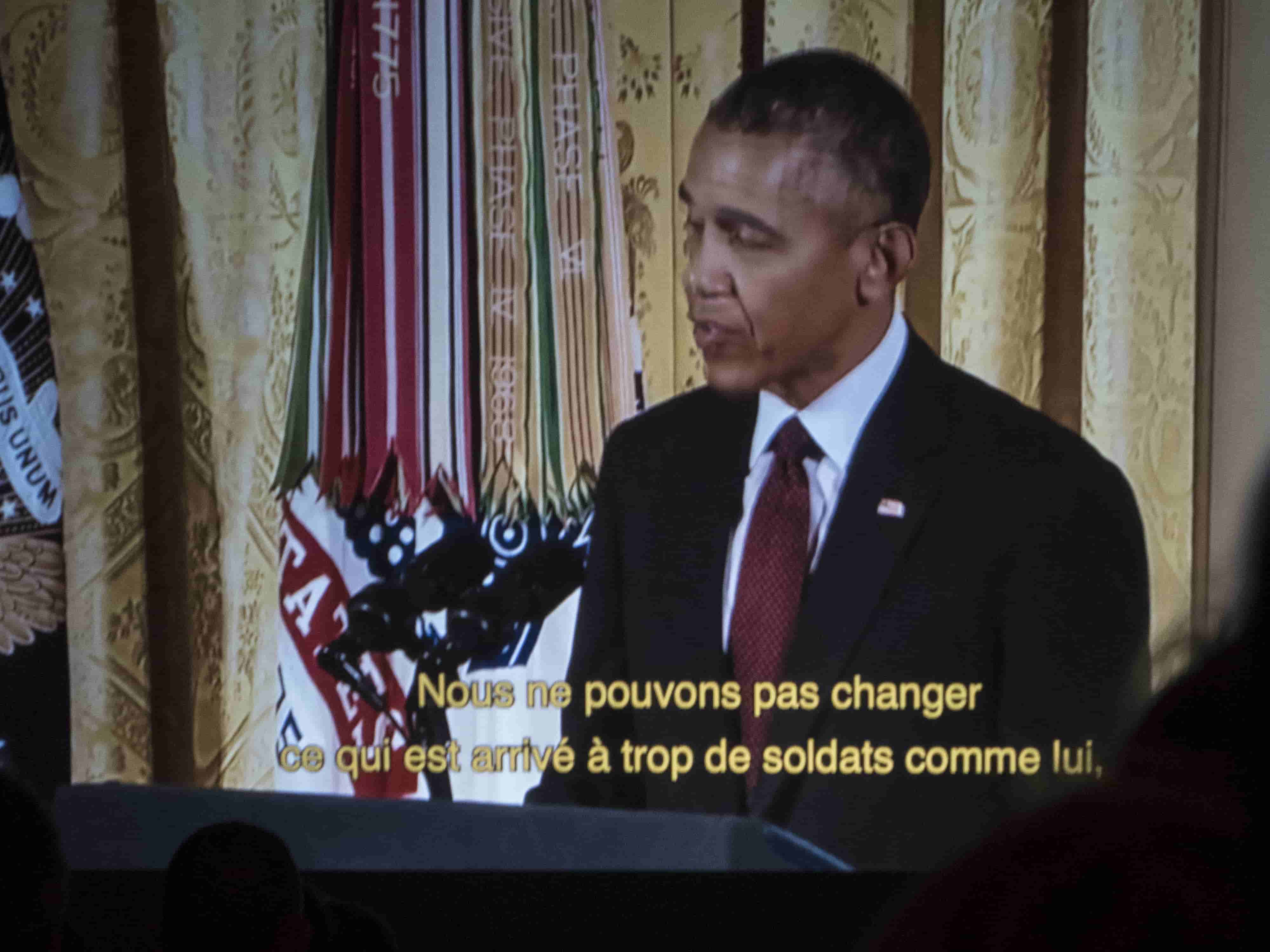 Screenshot – President Barack Obama presiding over 2015 ceremony
Screenshot – President Barack Obama presiding over 2015 ceremony
to award the Medal of Honor to Private Henry Johnson
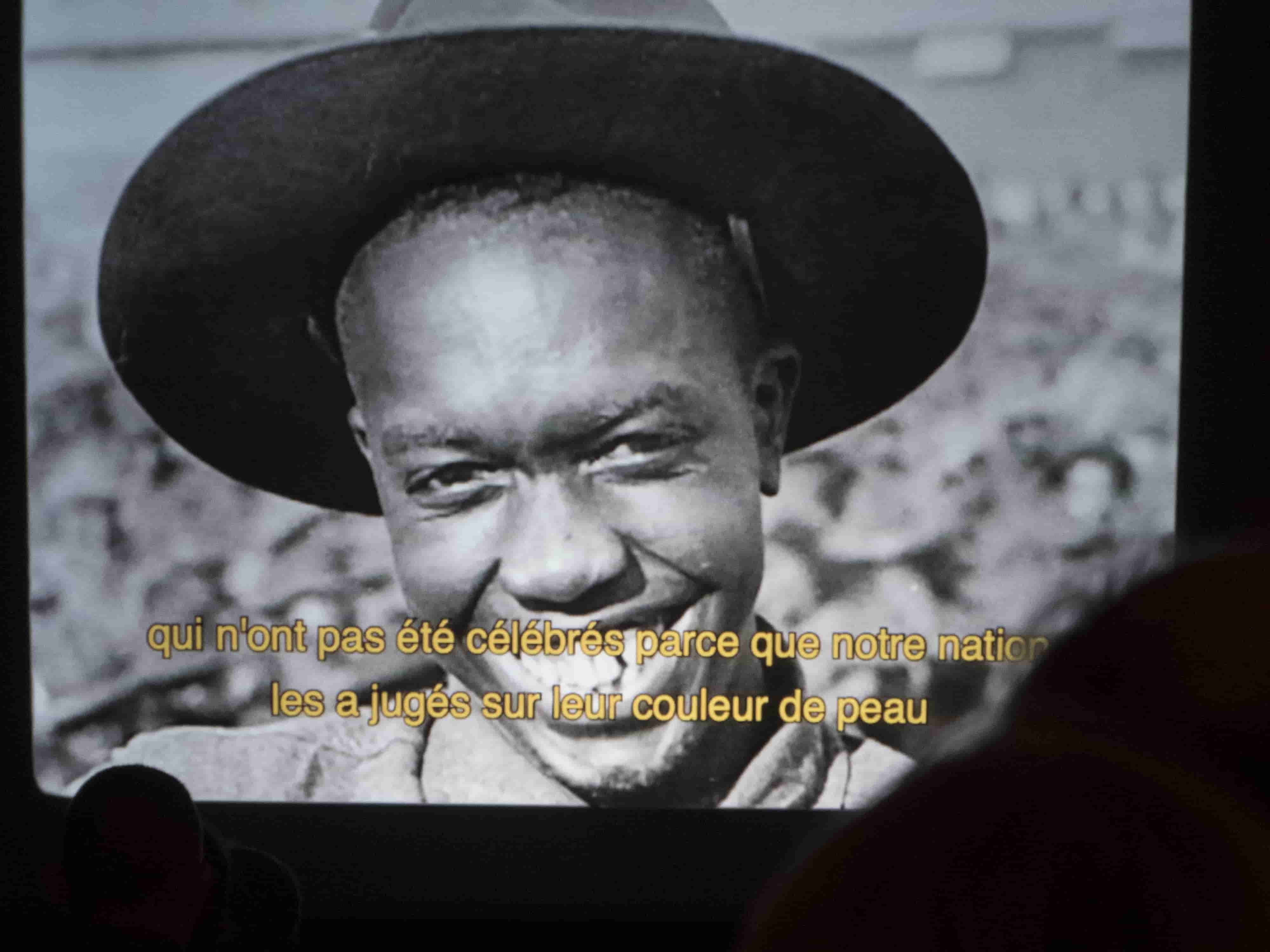
Screenshot – Photo of Private Henry Johnson
We then learn that five persons are featured in the film: Henry Johnson, James Reese Europe, Noble Sissle, Horace Pippin, and William Hayward. The documentary tells the story of each of these soldiers before, during, and after the war.
Numerous U.S. and French experts – historians, scholars, journalists, and others – elaborate on the conditions that inspired African Americans to enlist for service, the treatment they received as soldiers in the U.S. and in France, and the reception that awaited them upon their return from the war theater.
A particularly poignant scene shows jars of soil from sites of documented lynchings that are destined for the Memorial to Peace and Justice, the U.S.’s first national monument to lynching victims. Equal Justice Initiative director Bryan Stevenson, who conceived of the idea of the museum, is interviewed about how African-American soldiers were killed at home because of their service in the Great War.
Illustrated by drawings of Southern journalist Irvin Cobb, one segment of the film discusses Cobb’s change of heart about the worth of black people after he learned of the heroic actions of Private Henry Johnson and Private Needham Roberts in the Argonne Forest in 1918.
In the segment on Horace Pippin, art historian Anne Monahan discusses how Pippin’s career as a self-taught painter developed several years after the end of the war. She presents his 1930-1933 oil painting, The End of the War, Starting Home, as an example of the work that brought him to the attention of the art world.
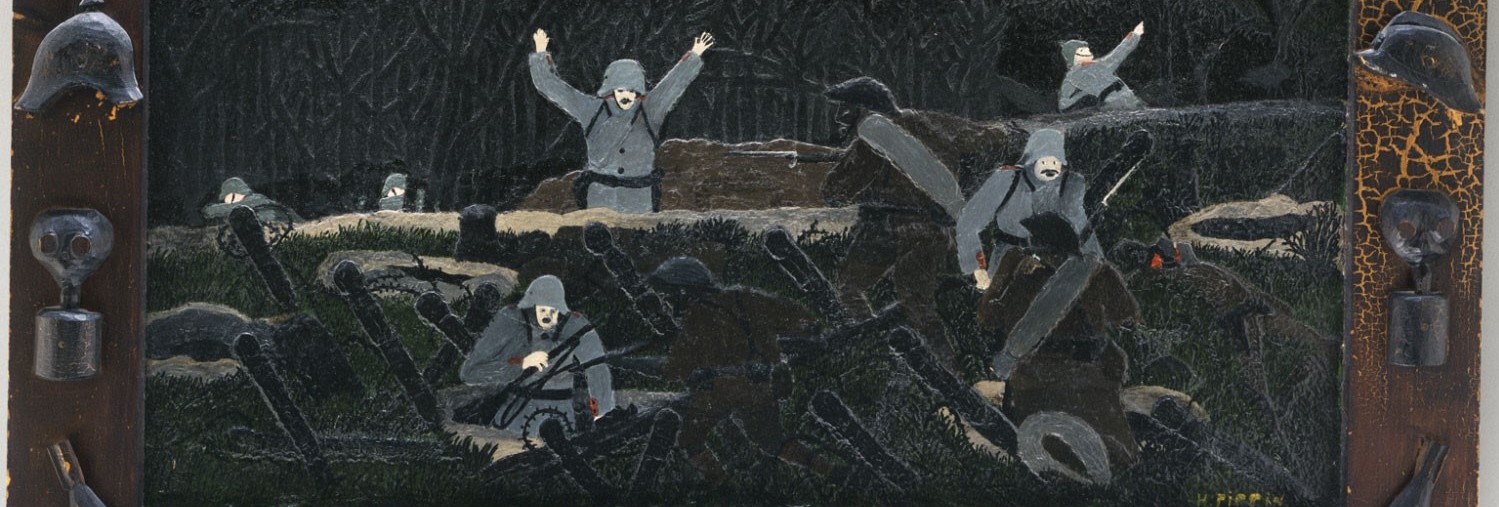 The End of the War, Starting Home (detail)
The End of the War, Starting Home (detail)
Horace Pippin
1930-1933 Oil on canvas
Philadelphia Museum of Art
Though the documentary is largely about the experiences of the Harlem Hellfighters, director Reinhardt includes a brief segment about France’s recruitment of black African soldiers. Blaise Diagne, Senegal’s elected representative in the French Chamber of Deputies, was a major supporter of this effort.
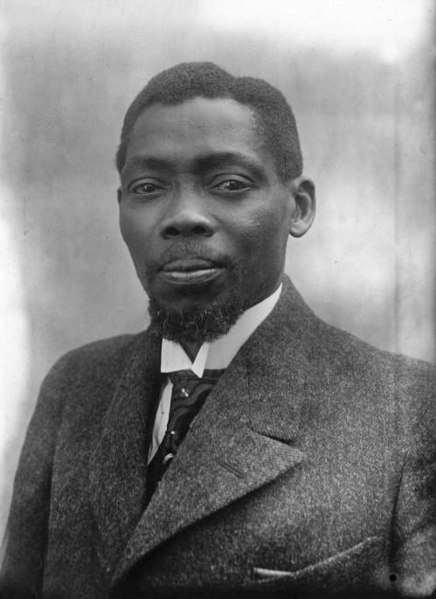 Blaise Diagne
Blaise Diagne
Source: Agence Meurisse – Bibliothèque Nationale de France
With the exception President Obama’s statement at the beginning of the film, which has French subtitles, French voice-overs present the commentary of U.S. experts.
After the screening, a lengthy panel discussion led by Pascal Blanchard, specialist in contemporary history and co-director of the research group Achac (specializing in colonialism and post-colonialism in France) ensued.
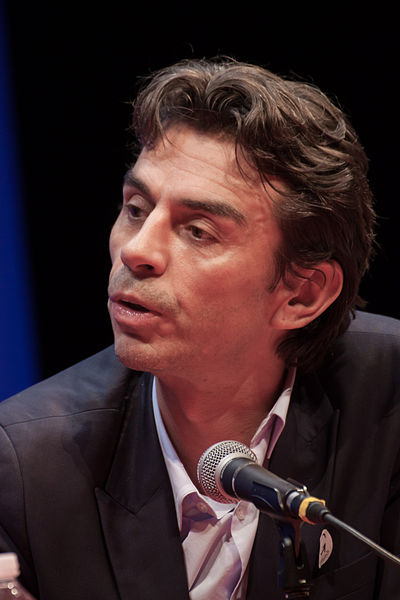 Pascal Blanchard
Pascal Blanchard
© Matthieu Riegler, CC-by
Source: Wikimedia Commons
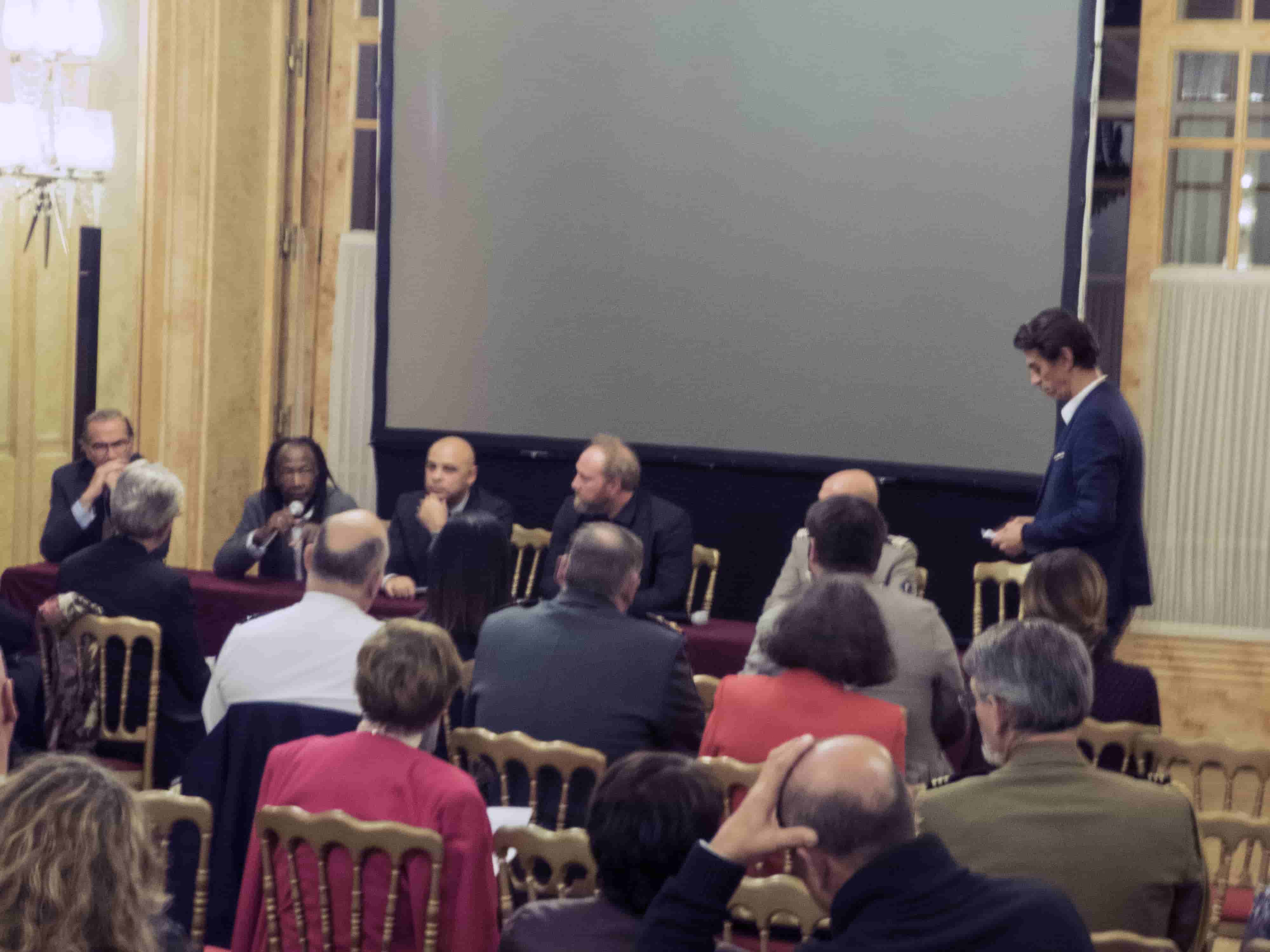
Round table discussion
© Entrée to Black Paris
In addition to Director Reinhardt, the panelists were:
- Eric Deroo, expert on France’s soldiers of color and founder of the National Council for the Rights of Overseas Veterans of the French Army
- Curtis Young, professor, expert on the 369th Regiment of New York (the Harlem Hellfighters), and member of the Scientific Council of the World War I Centennial Mission
- André Rakoto, expert on U.S. military institutions and ONACVG (National Office of Veterans and War Victims) director for Paris
- Jean Bourcart, lieutenant-colonel of the Armored Cavalry and bureau chief of the Defense Historical Service.
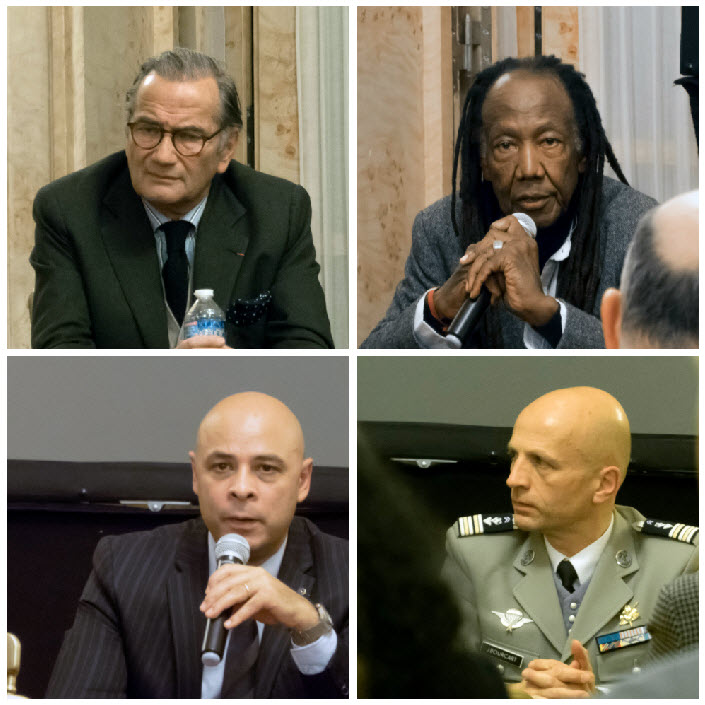 Top row: left to right – Eric Deroo and Curtis Young
Top row: left to right – Eric Deroo and Curtis Young
Bottom row: left to right – André Rakoto and Jean Bourcart
Images and collage: © Entrée to Black Paris
Blanchard posed several questions to the panel and then opened the session to questions from the audience. Topics of discussion included the specific ways in which racism is manifested in the U.S., whether / to what extent black U.S. and African soldiers crossed paths during the war, and General Pershing’s behaviors and actions toward African-American soldiers while in France.
To end the evening, attendees were invited to a reception where they could have a drink and view an exhibition entitled Soldats Noirs – Troupes françaises et américains dans les deux guerres mondiales (Black Soldiers – French and American troops in the two World Wars).
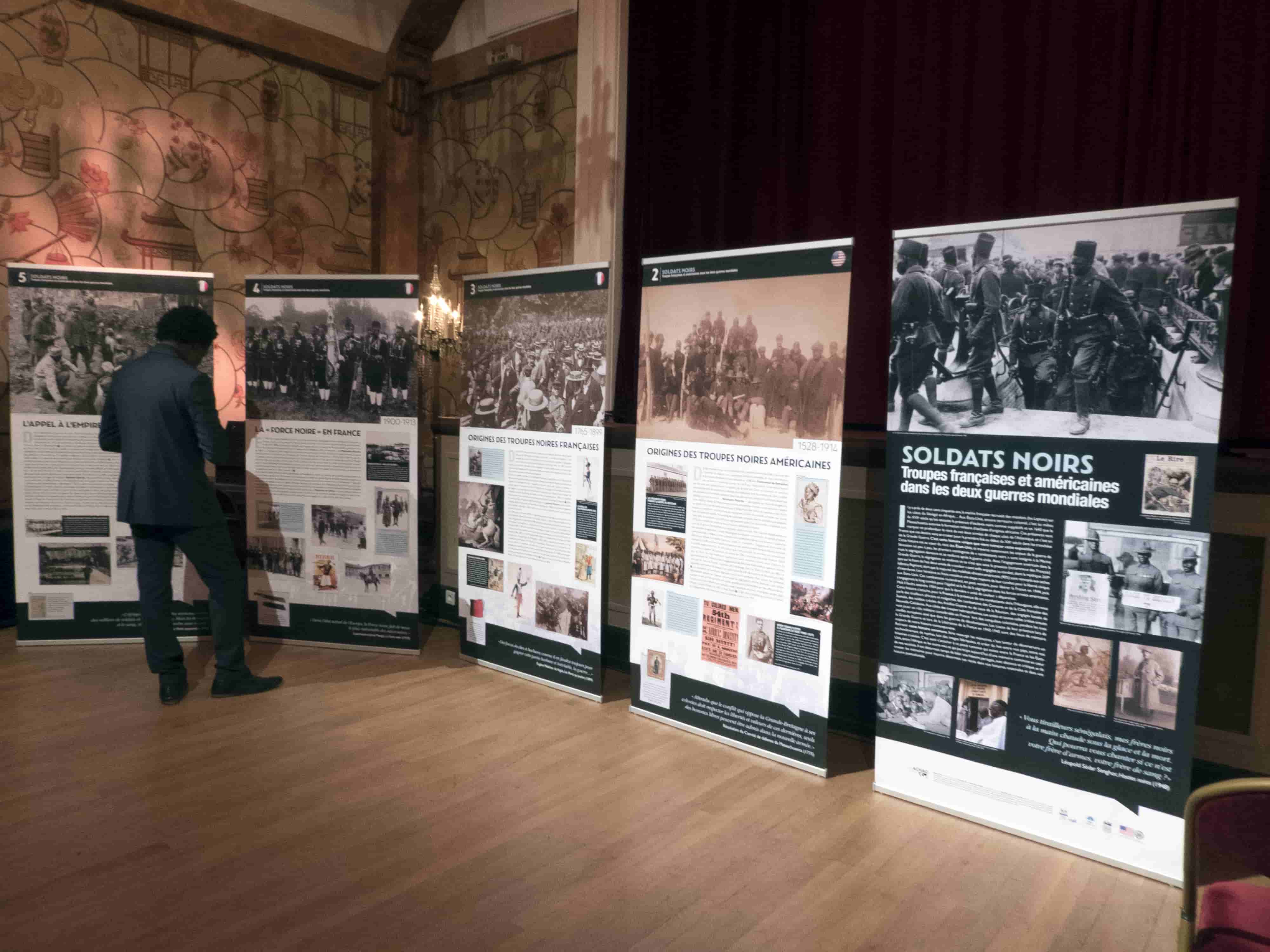 Exhibition: Soldats Noirs
Exhibition: Soldats Noirs
© Entrée to Black Paris
La Grande Guerre des Harlem Hellfighters will be shown on French public television network France Ô on December 13, 2017 at 8:55 PM.
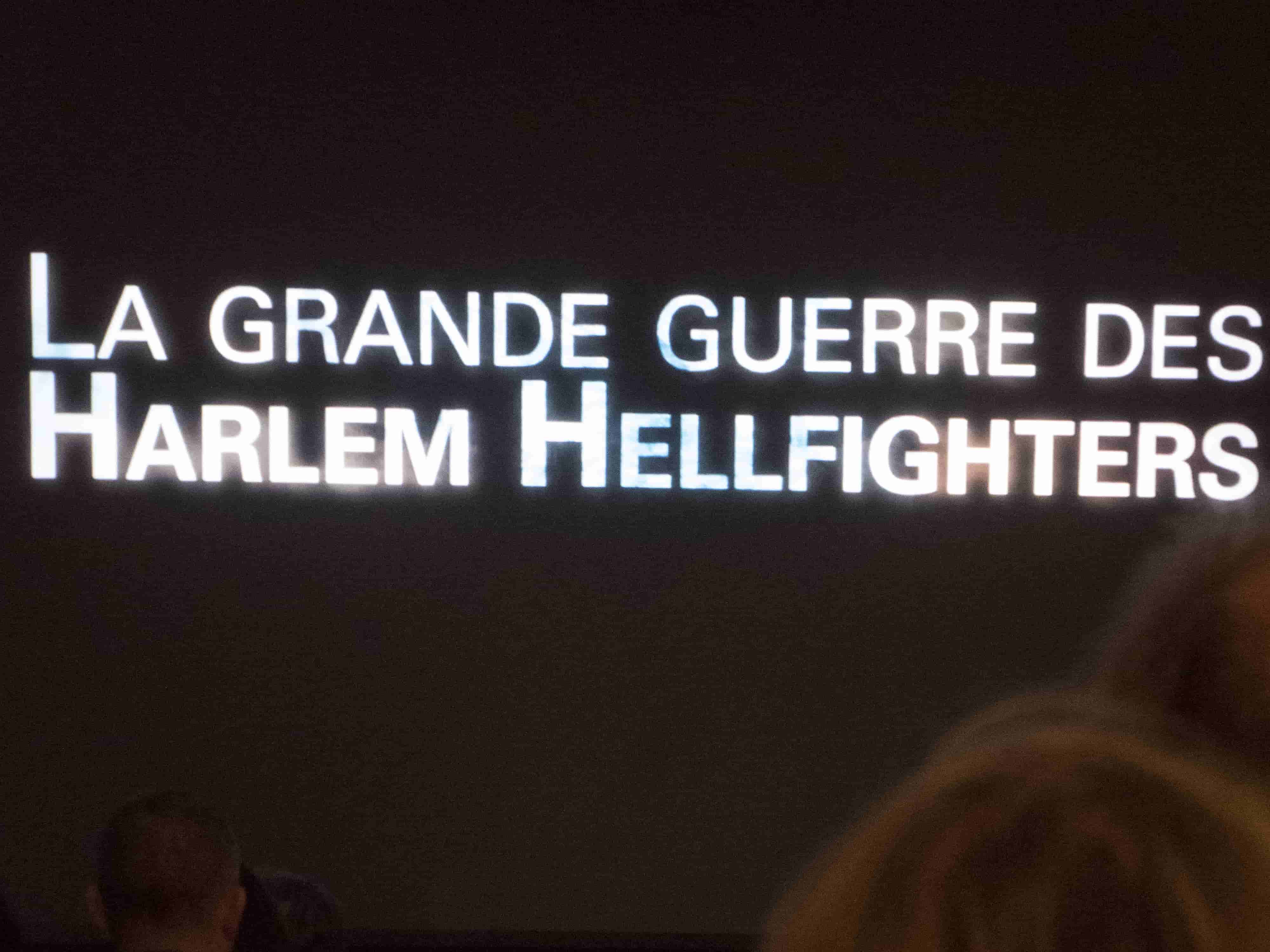 Screenshot - Title frame of film
Screenshot - Title frame of film
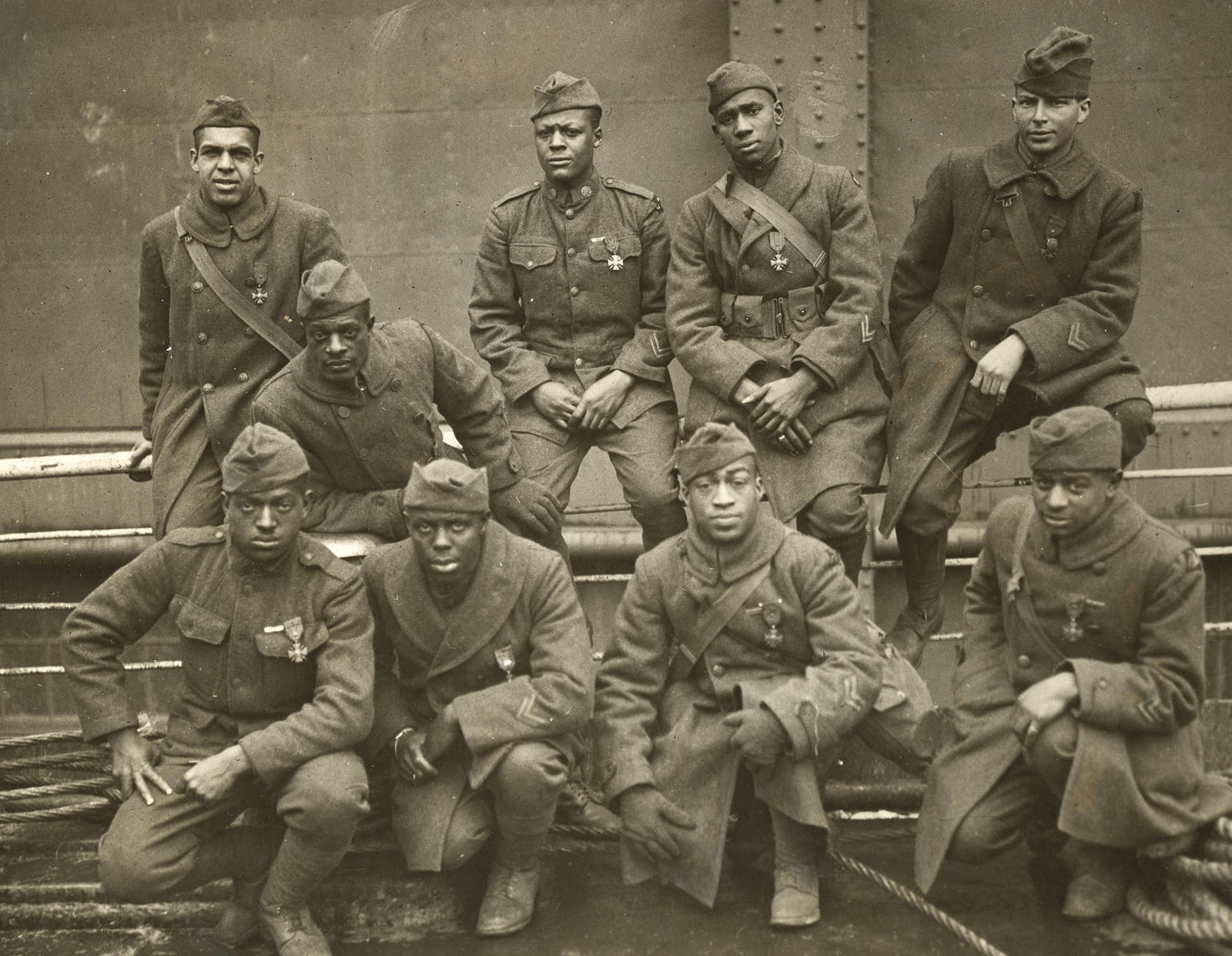 Soldiers of the 369th (15th N.Y.), awarded the Croix de Guerre for gallantry in action, 1919.
Soldiers of the 369th (15th N.Y.), awarded the Croix de Guerre for gallantry in action, 1919.
Left to right. Front row: Pvt. Ed Williams, Herbert Taylor, Pvt. Leon Fraitor, Pvt. Ralph Hawkins.
Back Row: Sgt. H. D. Prinas, Sgt. Dan Storms, Pvt. Joe Williams, Pvt. Alfred Hanley, and Cpl. T. W. Taylor
Source: Wikimedia Commons

 Our Walk: Black History in and around the Luxembourg Garden - Click here to book!
Our Walk: Black History in and around the Luxembourg Garden - Click here to book!